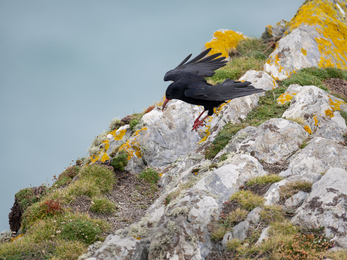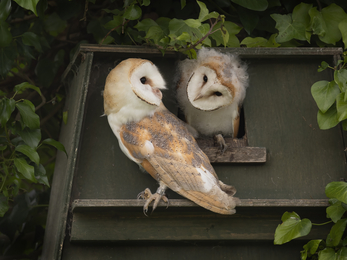Our annual charity Wild Cornwall Calendar is now available for 2022 and features Martin's, Adrian's and Cathy's images. 100% of sales supports the work of Cornwall Wildlife Trust and helps us to protect Cornwall's wildlife and wild places.
In this blog, enjoy hearing from three of the calendar’s photographers about their work, the stories behind their images and their top camera tips to help you pick up wildlife photography as a hobby.
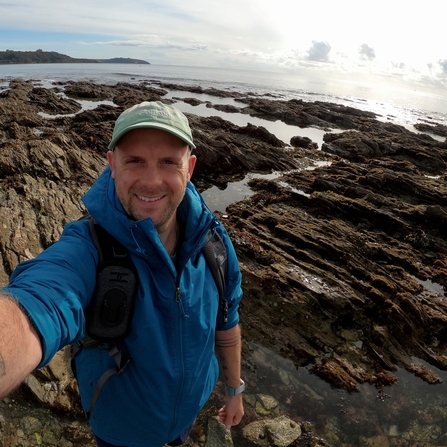
Martin Stevens
Tell us about yourself and your photography
I’m based in Falmouth and work as a professor in the University of Exeter’s Centre for Ecology and Conservation. Most of my work is focused on marine animals, which ties in nicely with my hobby as an underwater photographer. Most of the places I tend to visit are very local: Gylly Beach and Castle Beach just to name a few. Occasionally, I’ll go along the Helford Estuary or across to the Roseland. Wherever there’s a good bit of rocky shore or seagrass.
Lots of people can be fantastic naturalists and wildlife photographers without needing any kind of scientific background. I’m fortunate that a lot of my research uses camera technology and image analysis, but in the last few years I’ve really worked on making my photographs aesthetically pleasing.
I love taking photographs for my own pleasure, but it’s particularly enjoyable when others can take pleasure from them too. It’s fantastic they’re being used for a good cause like the Trust’s charity calendar.
What is the story behind your compass jellyfish image?
I remember it really well – it was early morning and very early light, meaning it was still quite dark underwater. The sun was out, creating these beautiful shafts of light that pierced the surface.
It’s so diverse – it’s hard to beat the wildlife that we have here in Cornwall.
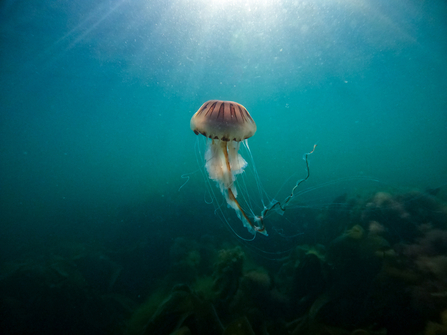
Compass Jellyfish, Image by Martin Stevens (featured in Cornwall Wildlife Trust's 2022 Wild Cornwall Calendar)
There was one particularly big compass jellyfish that I spotted hanging around in the water quite calmly. It was displaying its tentacles in a really nice way and was in really good condition (as sometimes they’re a bit beaten up, particularly later on in the summer). It was so large and so impressive; it was the perfect subject to photograph. I know some people are worried by jellyfish, but I really love them. They’re so beautiful and magnificent to look at!
What’s great about Cornish wildlife?
It’s so diverse – it’s hard to beat the wildlife that we have here in Cornwall. In terms of marine life, we get species seen only this far southwest. But we also get species coming in off the Atlantic, as well as the more northernly animals that you would associate with the UK more traditionally. We’ve got these really charismatic basking sharks and whales right through to the smallest of sea slugs. Then, of course, we have a fantastic array of birds and invertebrate life. We’re very lucky.
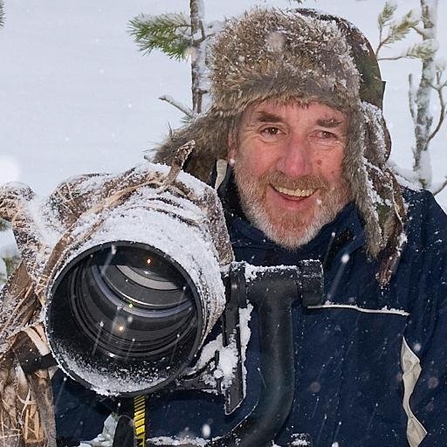
Adrian Langdon
Tell us a little bit about yourself and your connection to Cornwall’s wildlife
I was born and bred in Wadebridge and feel very proud to be Cornish. I’m a voluntary warden at both Walmsley Bird Sanctuary and Middle Amble Nature Reserve, a joint reserve ran by Cornwall Wildlife Trust and Cornwall Bird Watching and Preservation Society. I also chair Cornwall Wildlife Trust’s photographic group and have done for over fifteen years. They elected me one day when I didn’t turn up and it’s never changed since!
I’ve always been into wildlife and birdwatching - I wrote about herons and owls in all of my schoolbooks. I joined the Trust when I was still at school (it was still Cornwall Naturalists Trust back then) and I’ve been a member now for over fifty years.
You have two featured images in the calendar: the barn owlets and the chough. What’s the story behind these photographs?
To photograph barn owls at or near the nest with dependent young, you need a license from Natural England. I’m fortunate to have one and to know of someone who has had barn owls nesting in their garden for the last three years running. I put my hide in the corner of their garden and just sat there until it started to get dark. Fortunately, I got lucky and got the shot!
When you sit and study a particular species for hours and hours on end, that’s when you get the best behavioural shots.
The chough image was more accidental. I was out looking for short-eared owls on East Pentire at Newquay when all of sudden, a family of seven choughs landed right in front of me. I took lots of pictures that day, but the image of the chough jumping on top of the rocks seemed to catch the imagination of those that I’ve shown it too.
What’s your favourite wildlife image you’ve ever taken?
I’m a bit obsessed with kingfishers. I’ve got hundreds and hundreds of images, but I still can’t stop photographing them. This year, I managed to photograph an adult female sat in the entrance to the nest burrow with her head poking out, gazing at the outside world. I was only 30 feet away or so in my hide. I felt very privileged. To me, this was a special image, as to get this intimacy and to be this close to them has taken years of work.
When I think about it, I always get my best images when I’m sat in my hide. Occasionally you walk around with a camera and capture something great. But when you sit and study a particular species for hours and hours on end, that’s when you get the best behavioural shots.
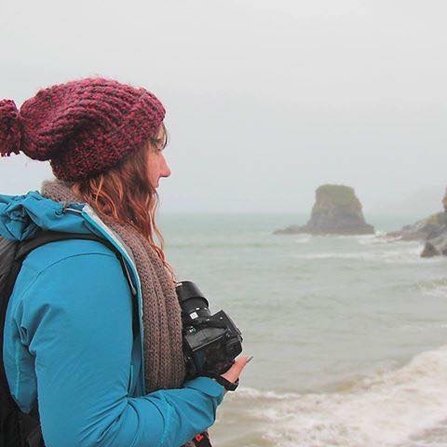
Cathy Rhodes
Tell us a little bit about yourself and your background
I live just outside of Truro and do quite a lot of my photography in the garden. I also get out to the dunes at Godrevy, Tehidy Woods and lots of other places on the north cliffs. Or I’m in mine or my mum’s garden. My mum is an amazing gardener and has an amazing array of plants, which attracts lots of bees and butterflies, and she’s got a pond for the dragonflies too.
Growing up in the middle of nowhere in Herefordshire, my love of wildlife started when I was quite small. I was often picking up caddisflies out of streams, keeping snails and playing with all the bugs I could. I did all the adult stuff, such as going to university and having kids, but I started taking wildlife photography more seriously around five years ago.
The theme for our 2022 Calendar is ‘Nature in Lockdown’. Did photographing wildlife help you during the pandemic?
I got an OS app on my phone at the start of lockdown and used it to walk the bridleways from home as part of my daily exercise. I walked the Bissoe trail and some of the old railway lines that head into Truro. As I had to work from home, I made the most out of sitting in mine and my mum’s garden and I gravitated towards photographing flowers.
Photography really helped me to de-stress. I have quite a stressful and time-consuming job and it’s a really nice way to decompress and take my mind off of things.
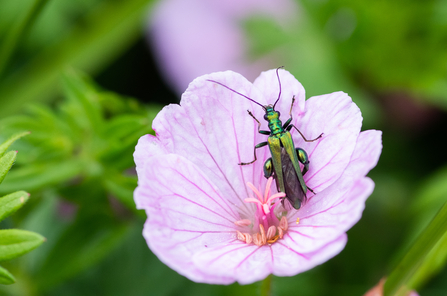
Thick-legged Flower Beetle, Image by Catherine Rhodes (featured in Cornwall Wildlife Trust's 2022 Wild Cornwall Calendar)
Photography really helped me to de-stress. I have quite a stressful and time-consuming job and it’s a really nice way to decompress and take my mind off of things.
Do you have a favourite species to photograph?
Definitely the thick-legged flower beetle that’s in the calendar. It’s so shiny and a really pretty beetle. Both me and mum have pink gernaiums in our gardens and there were loads of them on there during spring. When you start seeing them, you know the weather is going to get better.
PHOTOGRAPHY 101
Martin, Adrian and Cathy share their top tips to help you get started with wildlife photography this winter.
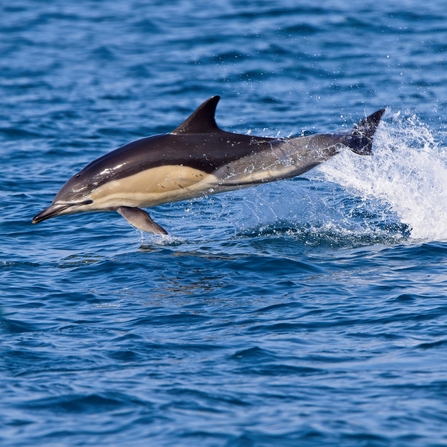
Common Dolphin, Image by Tony Mills (featured in Cornwall Wildlife Trust's 2022 Wild Cornwall Calendar)
- Begin with a familiar environment
“My thick-legged beetle image in the calendar was taken right in my front garden. I often photograph wildlife in my mum’s or my garden. You don’t have to travel far to get a great photo.” Cathy - Have a plan
"It’s great to go out and encounter wildlife, but having an idea beforehand of what you want to photograph and how you might compose the photo will make all the difference. Learn more about the behaviour of the particular species you want to photograph and where and when you can see it.” Martin - Don’t ignore the background!
“You’re not in control of where the animal will position itself, but if you pay attention to the lighting and what’s in the background, you can make any creature look amazing!” Martin
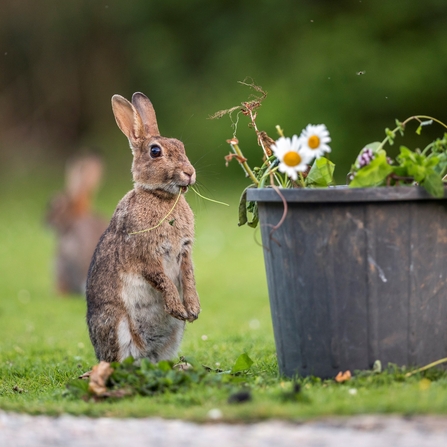
Rabbit, Image by David Chapman (featured in Cornwall Wildlife Trust's 2022 Wild Cornwall Calendar)
- Show the animals in their environment
“Getting a big lens and wanting to fill the frame for every image is an easy mistake to make. Instead, pull back a little and show the habitat the animal is in. That way, you can capture something more meaningful and a little bit different from the images everyone else is taking.” Adrian - Respect wildlife
“Don’t try to get too close to your subject – you’ll more than likely disturb it. Give it space and time, observe it from a distance and being patient will pay off.” Adrian - Take lots of photos
“When I look back, there’s a huge difference between the photographs I took five years ago and the ones I’m taking now – they’re so much better! If you take ten photos and bin nine of them, that’s ok.” Cathy
Purchase our 2022 Calendar today!
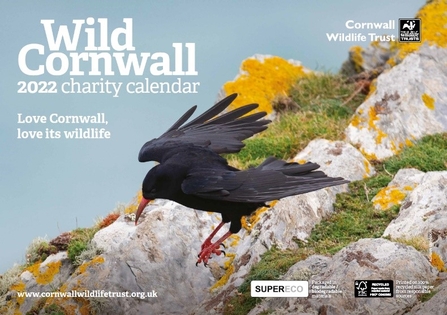
Our 2022 Wild Cornwall Calendar features 13 stunning wildlife images taken during lockdown collected from our Nature in Lockdown 2020 Survey and from local photographic groups. It's printed on recycled silk paper and sure to make the perfect gift for any nature lover! 100% of sales supports the work of Cornwall Wildlife Trust and helps us to protect Cornwall's wildlife and wild places.


